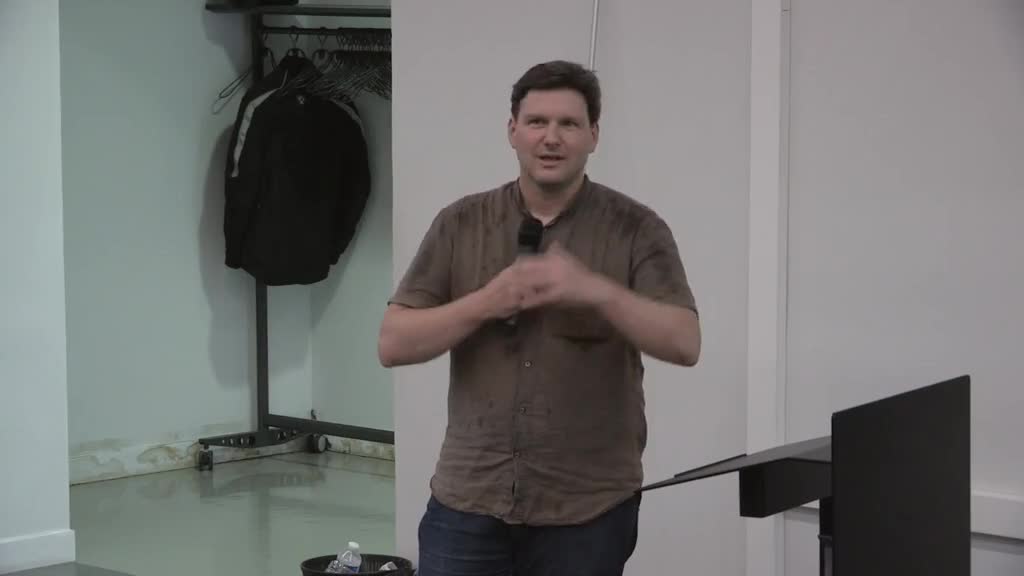Notice
Opponency revisited
- document 1 document 2 document 3
- niveau 1 niveau 2 niveau 3
Descriptif
According to the efficient coding hypothesis, the goal of the visual system should be to encode the information presented to the retina with as little redundancy as possible. From a signal processing point of view, the first step in removing redundancy is de-correlation, which removes the second order dependencies in the signal. This principle was explored in the context of trichromatic vision by Buchsbaum and Gottschalk (1) and later Ruderman et al. (2) who found that linear de-correlation of the LMS cone responses matches the opponent color coding in the human visual system.
And yet, there is comparatively little research in image processing and computer vision that explicitly model and incorporate color opponency into solving imaging tasks. A common perception is that “colors” are redundant and/or too correlated to be of any interest, or that they are too complex to deal with. Within deep learning frameworks, color features are rarely considered.
In this talk, I will illustrate with several examples of our research, such as on saliency and super-pixels, that considering opponent colors can significantly improve image processing and computer vision tasks not only in image enhancement but also image segmentation, image ranking, etc. We have in addition extended the concept of “color opponency” to include near-infrared. And we show that these de-correlation concepts also apply to deep learning models in rather interesting ways.
(1) Trichromacy, opponent colours coding and optimum colour information transmission in the retina (Gershon Buchsbaum and A. Gottschalk)
(2) Statistics of cone responses to natural images: implications for visual coding (Daniel L. Ruderman, Thomas W. Cronin, and Chuan-Chin Chiao)
Intervention / Responsable scientifique
Sur le même thème
-
Une minute avec Pierrick Legrand
LegrandPierrickDe Nantes à Bordeaux en passant par le Mexique, Pierrick Legrand nous partage son parcours guidé par la passion des mathématiques et le plaisir d’apprendre chaque jour.
-
L'Enderscope : une plateforme pédagogique pour l'imagerie computationnelle.
MuttererJérômeGrandgirardErwanL'Enderscope est un système d'imagerie microscopique automatisé open hardware…
-
Le projet Affinity - Evaluer le comportement des personnes avec TSA en présence de leur affinité
ChérelMyriamBayou-OuttasMeriemFournierJulieBucherEmmaMannPaulineA travers cette série d'interviews, le LabEx vous invite à découvrir le projet Affinity qui s'intéresse à la relation entre les personnes atteintes d'un trouble du spectre de l'autisme et leurs
-
Computational reproductibility: an overview illustrated with examples from the medical imaging rese…
PopSorinaComputational reproductibility: an overview illustrated with examples from the medical imaging research community
-
Spiking Control Systems
SepulchreRodolpheSpikes and rhythms organize control and communication in the animal world, in contrast to the bits and clocks of digital technology. As continuous-time signals that can be counted, spikes have a mixed
-
IMOTEP - IMagerie infra-rOuge pour le suivi de la circulaTion de l’Eau impliquée dans la dégradatio…
RousselErwanPrésenté par Erwan Roussel (GEOLAB), le projet IMOTEP proposait de développer un outil d'imagerie infra-rouge pour le suivi de la circulation de l’eau impliquée dans la dégradation du patrimoine bâti.
-
Memory, Light, Spin Glasses, and Deep Classification
LeonettiMarcoMarco Leonetti livre une présentation de haut niveau, à la fois riche et inspirante à l'interface de l'apprentissage machine, de la physique statistique et de l'optique ondulatoire en milieu diffusant
-
Présentation Journées Imagerie Optique Non Conventionnelle (JIONC)
VerrierNicolasFontbonneAliceDucrosNicolasJournées visant à réunir des chercheurs, ingénieurs, académiques ou industriels afin d'échanger sur les plus récents développements de systèmes ou de traitements pour l'imagerie non-conventionnelle.
-
Knowledge transfer and human-machine collaboration for training object class detector
FerrariVittorioObject class detection is a central area of computer vision. It requires recognizing and localizing all objects of predefined set of classes in an image. Detectors are usually trained under
-
Safety Verification of Deep Neural Networks
KwiatkowskaMartaDeep neural networks have achieved impressive experimental results in image classification, but can surprisingly be unstable with respect to adversarial perturbations, that is, minimal changes to
-
Visual Reconstruction and Image-Based Rendering
SzeliskiRichardThe reconstruction of 3D scenes and their appearance from imagery is one of the longest-standing problems in computer vision. Originally developed to support robotics and artificial intelligence
-
Du traitement numérique des images et de la vision par ordinateur à la neuro-imagerie : un voyage d…
DericheRachidRachid Deriche donne une rapide vue d'ensemble de ses travaux de recherche, depuis ses débuts, en traitement et analyse d'image, sur l'extraction de contours en particulier, puis en théorie et














